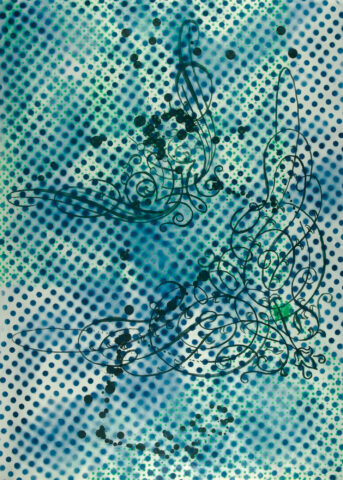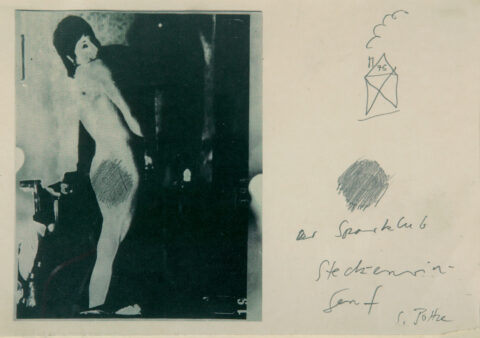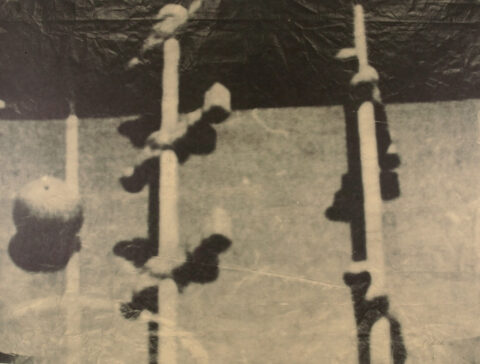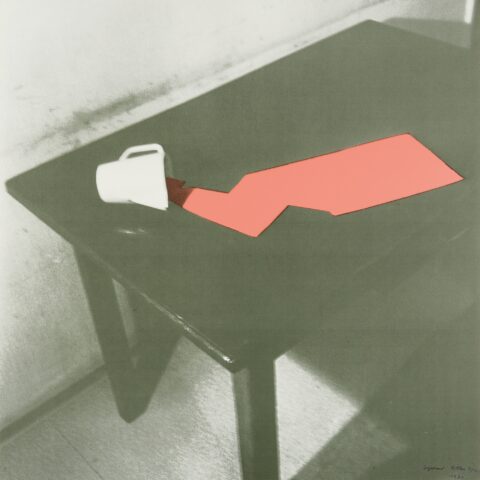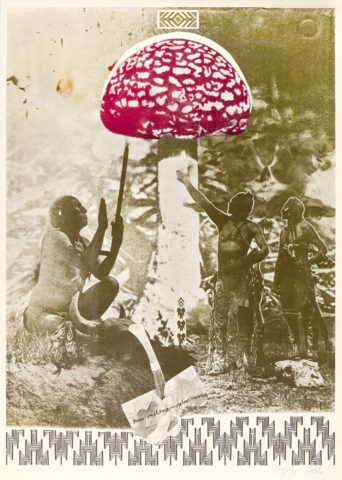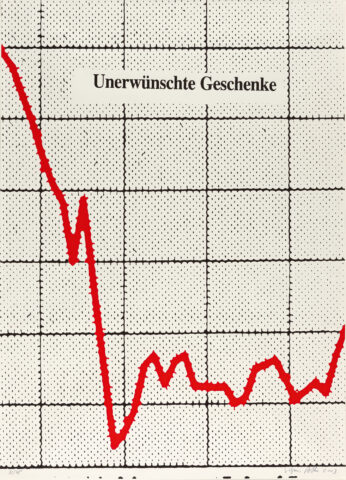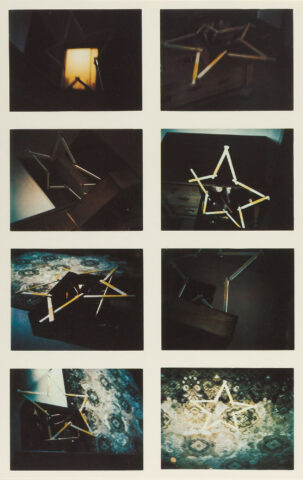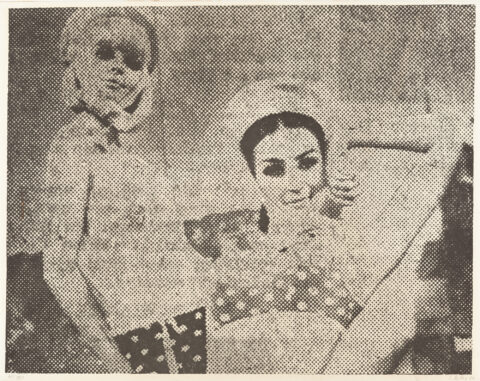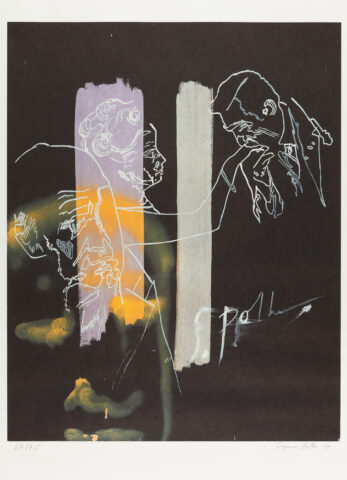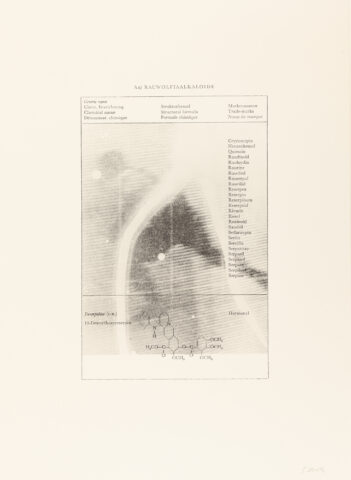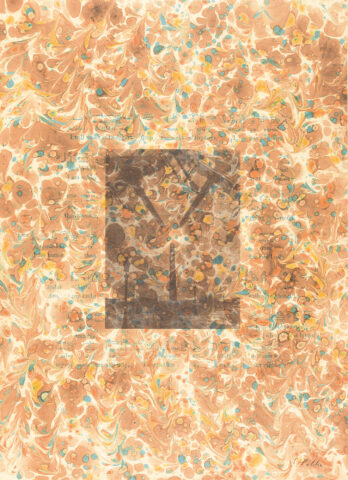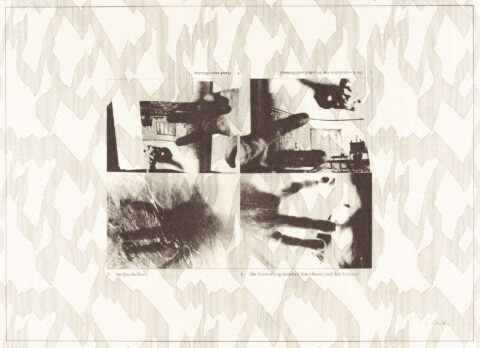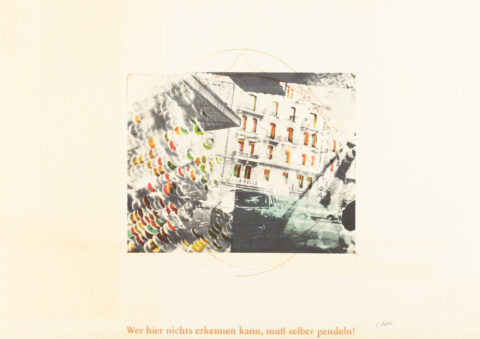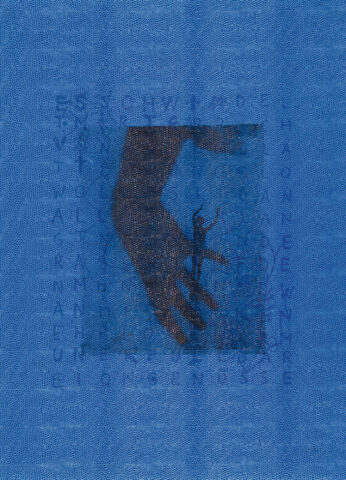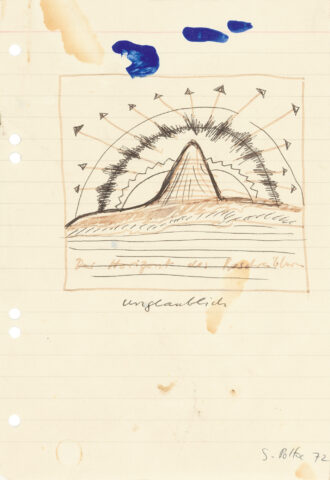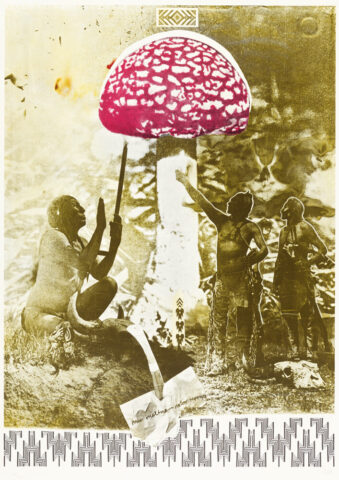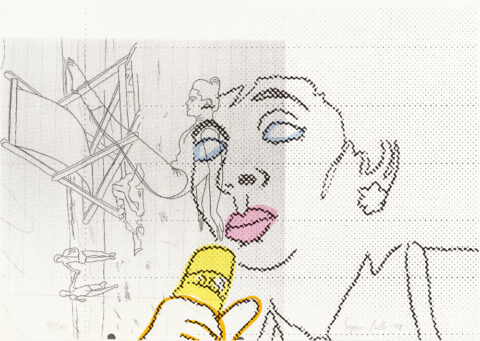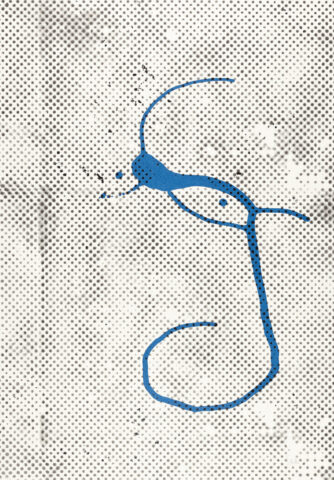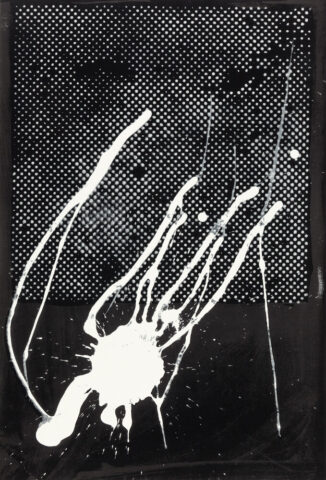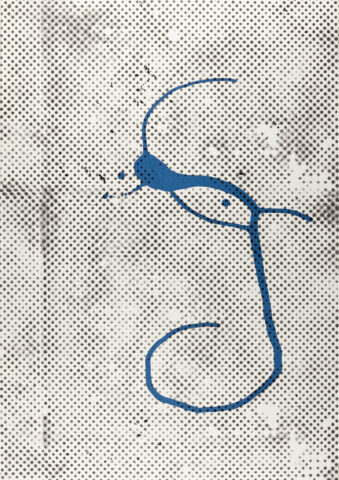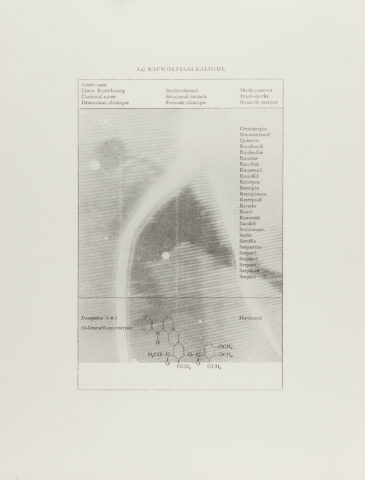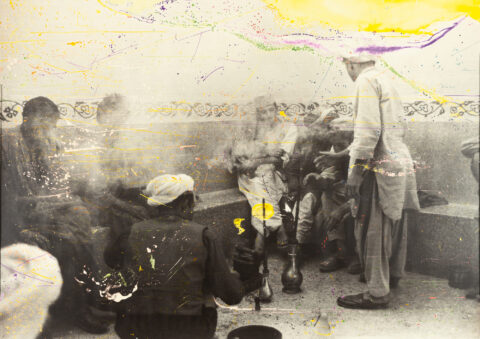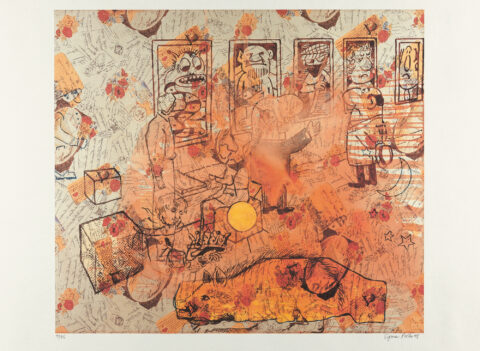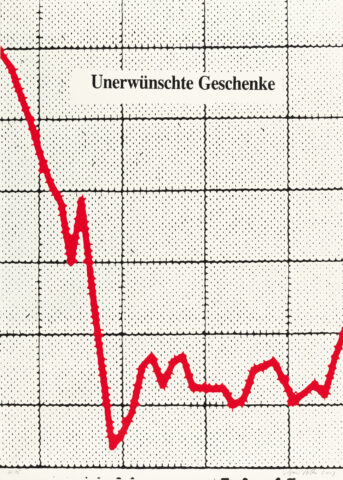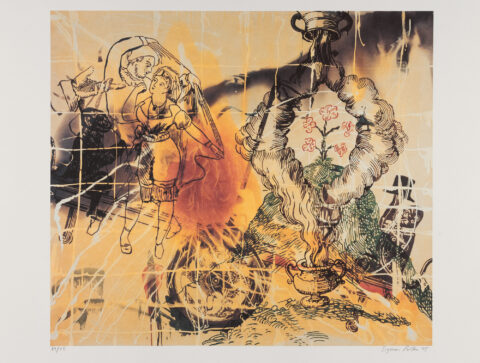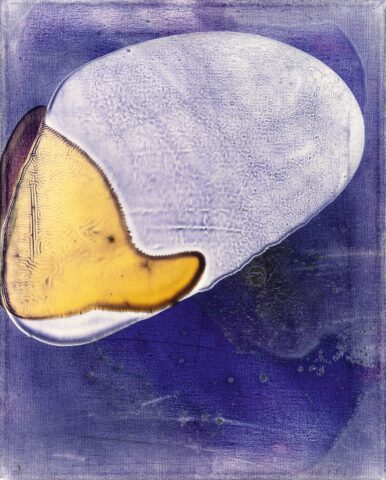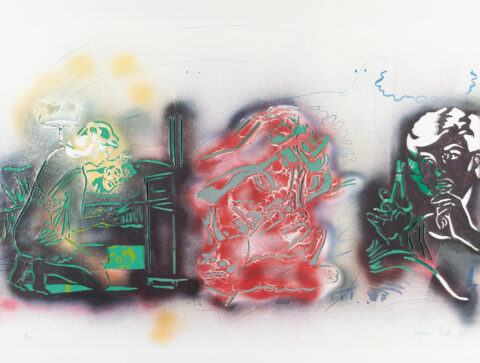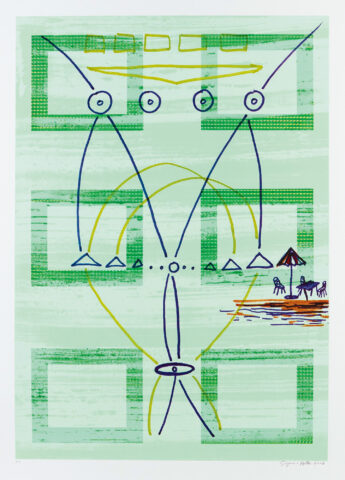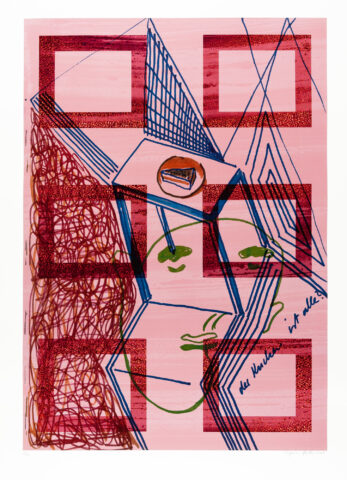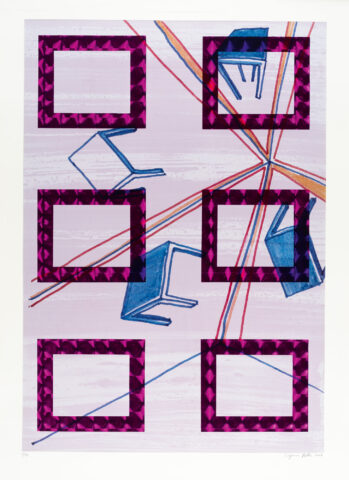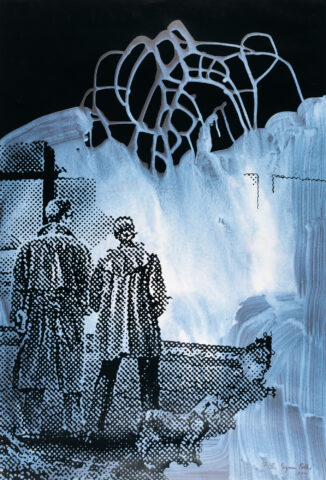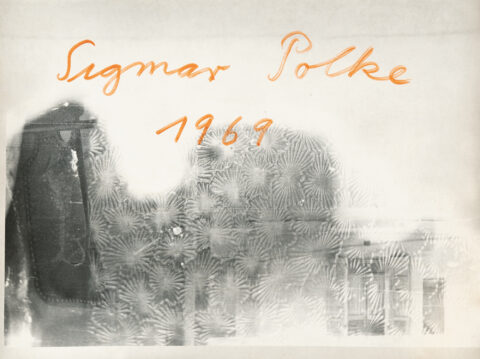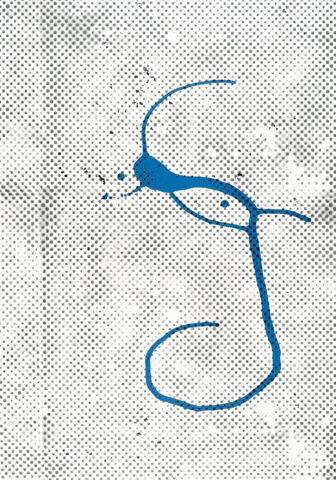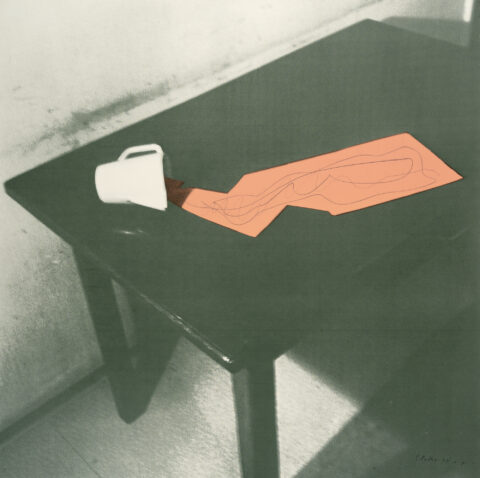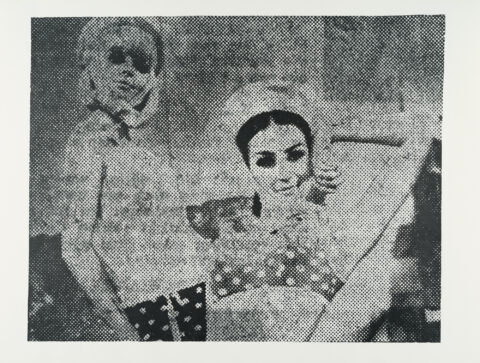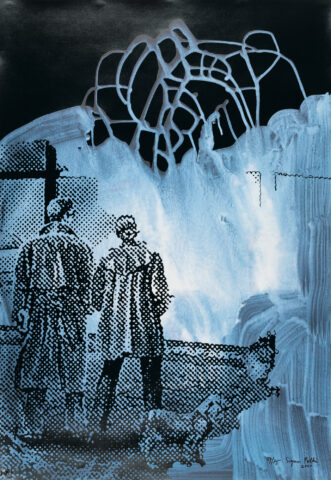Sigmar Polke
Sigmar Polke was born in Silesia in 1941 and had to flee with his family to Thuringia in 1945. In 1953 they moved to West Germany. In Düsseldorf Polke finally completed an apprenticeship as a glass painter and subsequently studied there from 1961 to 1967 at the art academy with Karl Otto Goetz and Gerhard Hoehme. In the early 1960s Polke worked intensively with Gerhard Richter. Together with Konrad Lueg, the two founded Capitalist Realism in 1963. In 1972, 1979 and 1982 he took part in the documenta in Kassel. He was a visiting professor at the Hochschule für Bildende Künste, Hamburg, from 1970 to 1971 and held a permanent chair there from 1977 to 1991. In his early works, Polke addressed the consumerist leisure society with irony, depicting mass products of everyday life. His trademark, however, became the gridded newspaper pictures with which he preferred to paint over printed fabrics. He worked with various artistic media, including photography, film and installation. Polke received many awards, including the Kaiserring in 2000, the Art Prize of the City of Goslar, the Mönchehaus Museum Goslar and the Roswitha Haftman Prize in 2010. His largest public commission was the design of the church windows in the Grossmünster in Zurich, which was awarded to him in a competition in 2006. The windows were completed and inaugurated in 2009. In 2014-2015, the Museum of Modern Art, New York, the Tate Modern, London, and the Museum Ludwig, Cologne, dedicated a comprehensive retrospective to the artist.


